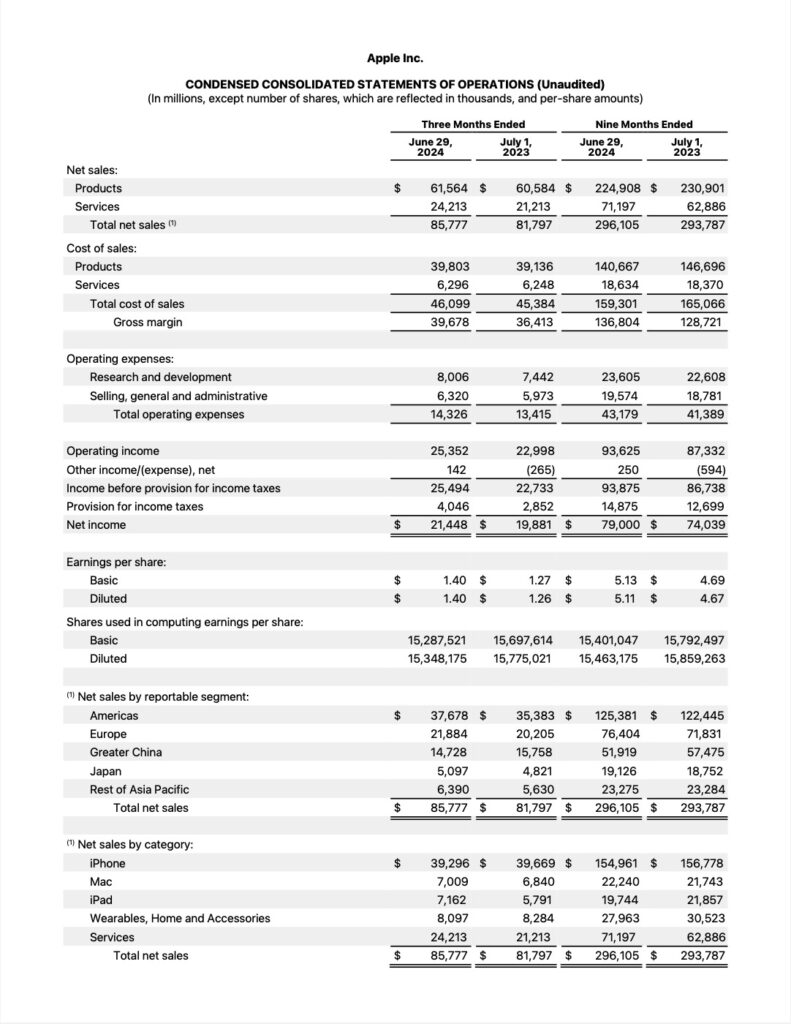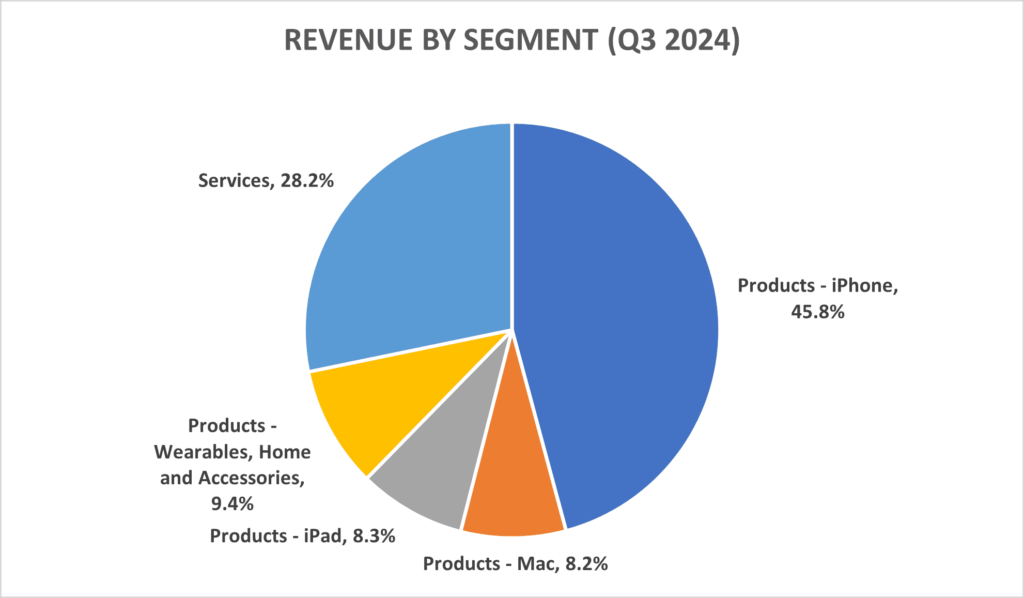
A profit and loss statement, often referred to as an income statement, is a financial document that provides a comprehensive summary of a companies revenues, costs, and expenses over a specific period. It reveals whether a business has made a profit or incurred a loss, offering crucial insights into operational efficiency and financial performance. For investors, the profit and loss statement is one of the most important tools when evaluating a companies potential. It helps assess profitability, growth trajectory, and overall financial health by breaking down key components such as revenue, cost of sales, gross profit, operating expenses, and net income. Understanding how to read this statement can guide investment decisions by identifying trends and potential risks.
When it comes to Apple Inc., a global technology leader, its profit and loss statement offers fascinating insights into the company financial operations. Applejourney has always been marked by innovation and financial strength, and its income statement paints a clear picture of how the company continues to perform in the dynamic tech industry. By examining Apple profit and loss statement from an investors perspective, we can better understand its financial standing, profitability, and growth potential.
To read a profit and loss statement effectively, one must start with the top line revenue, often called sales or turnover. This figure represents the total income generated from Apples products and services before any expenses are deducted. Moving down the statement, we encounter the cost of sales or cost of goods sold (COGS), which reflects the direct costs associated with producing Apples devices and delivering services. Subtracting the COGS from total revenue yields the gross profit, a crucial metric that highlights the efficiency of Apples production and pricing strategies.
Apples revenue streams are diversified across product and service categories. In the fiscal year ending September 2024, Apple reported total revenue of $391.04 billion, marking a 2% increase from the previous year. This growth, despite global economic uncertainties, underscores the companys resilience and innovative approach. The iPhone remains the largest revenue contributor, generating $201 billion, followed by other products like the Mac, iPad, and wearables. Meanwhile, the Services segment has emerged as a significant growth driver, contributing $96.1 billiona 13% increase from 2023. This segment, which includes Apple Music, iCloud, and the App Store, reflects Apples strategic shift toward subscription-based, recurring revenue streams, which provide more financial stability compared to one-time hardware sales.

The gross profit is the next critical figure on the statement, calculated by subtracting the cost of sales from total revenue. In 2024, Apple gross profit stood at $180.68 billion, with a gross margin of approximately 46.2%. This margin indicates that Apple retains nearly half of its revenue after accounting for production costs, demonstrating its efficient cost management and strong pricing power. For investors, a consistently high gross margin is a positive indicator, as it suggests the company can maintain profitability even when facing cost fluctuations or competitive pressures.
Following the gross profit, the statement outlines operating expenses, which are divided into research and development (R&D) and selling, general, and administrative (SG&A) costs. In 2024, Apple allocated $31.37 billion to R&D, reflecting its commitment to innovation in areas such as artificial intelligence, augmented reality, and custom silicon development. This investment is crucial for maintaining Apples competitive edge in a rapidly evolving tech landscape. SG&A expenses, meanwhile, amounted to $26.1 billion, covering marketing, advertising, and day-to-day administrative functions. These expenses are essential for sustaining Apples brand presence and operational infrastructure.
Subtracting operating expenses from the gross profit results in the operating income, which stood at $123.22 billion in 2024. This figure represents Apples earnings from core business operations, excluding non-operating items like interest and taxes. The operating income serves as a reliable indicator of a companys operational efficiency and profitability. For Apple, maintaining a high operating income despite increased R&D expenditures signals strong operational performance and effective cost control.
The next section of the profit and loss statement includes non-operating items, such as interest expenses and other financial activities. In 2024, Apple incurred interest expenses related to its corporate debt, though these costs were offset by income from its substantial cash reserves. After accounting for these items, the company reported a pre-tax income of $118.45 billion.
Taxes are then deducted to arrive at the net income, often referred to as the bottom line. In 2024, Apples net income was $93.74 billion, reflecting a slight decrease from the $96.99 billion recorded in 2023. This decline was primarily attributed to a one-time tax charge related to its European operations. Despite this, Apples ability to generate nearly $94 billion in net income highlights its strong market position and efficient cost structure.
For investors, the net income figure is critical as it represents the companys actual profitability. However, many also look at earnings per share (EPS), which provides a per-share breakdown of earnings. In 2024, Apple reported an EPS of $6.301, indicating that each share of Apple stock generated $6.301 in profit. EPS is often used to compare profitability across companies or track performance trends within the same company over time.
Another crucial aspect of the profit and loss statement is its regional performance breakdown. Apple operates in several key markets, including the Americas, Europe, Greater China, Japan, and the rest of the Asia-Pacific region. In 2024, the Americas remained Apples largest market, contributing $152.65 billion in revenue. Europe followed with $96.1 billion, while Greater China experienced a notable decline, with revenue falling to $74.5 billion due to increased competition from local tech companies and regulatory challenges. Understanding regional performance helps investors assess potential growth opportunities and risks associated with specific markets.
Beyond the immediate figures, Apples profit and loss statement also reflects the impact of currency fluctuations. As a global business, Apple earns a significant portion of its revenue in foreign currencies. In 2024, the company faced headwinds from a stronger U.S. dollar, which reduced the value of international earnings when converted back to dollars. Investors must consider these external factors, as currency movements can significantly impact financial results.
The statement also provides insights into Apples cash flow and capital expenditures. In 2024, Apple capital expenditures totaled $10.5 billion, primarily invested in manufacturing facilities, data centers, and retail expansions. The free cash flow, which represents cash generated from operations after deducting capital expenditures, amounted to $108.81 billion. A healthy free cash flow is essential for funding growth initiatives, paying dividends, and repurchasing shares.
Speaking of shareholder returns, Apples profit and loss statement highlights its ongoing commitment to rewarding investors. In 2024, the company returned approximately $29 billion through dividends and share buybacks. This approach not only enhances shareholder value but also signals confidence in Apples future profitability.
Reading a profit and loss statement from an investors perspective requires more than just understanding the numbers. It involves analyzing trends, comparing performance across periods, and evaluating the underlying factors driving growth or decline. In Apples case, the statement reveals a company that, despite global challenges, continues to deliver solid financial results, driven by a balanced mix of hardware innovation and services growth.
In conclusion, Apples profit and loss statement offers a window into the companys financial performance and operational strategies. With strong revenue growth, high gross margins, and consistent profitability, Apple remains a compelling investment option. However, investors should remain mindful of external risks, such as currency fluctuations and competitive pressures, particularly in key markets like China. By carefully analyzing this financial document, investors can make more informed decisions about Apple potential as a long-term investment.



